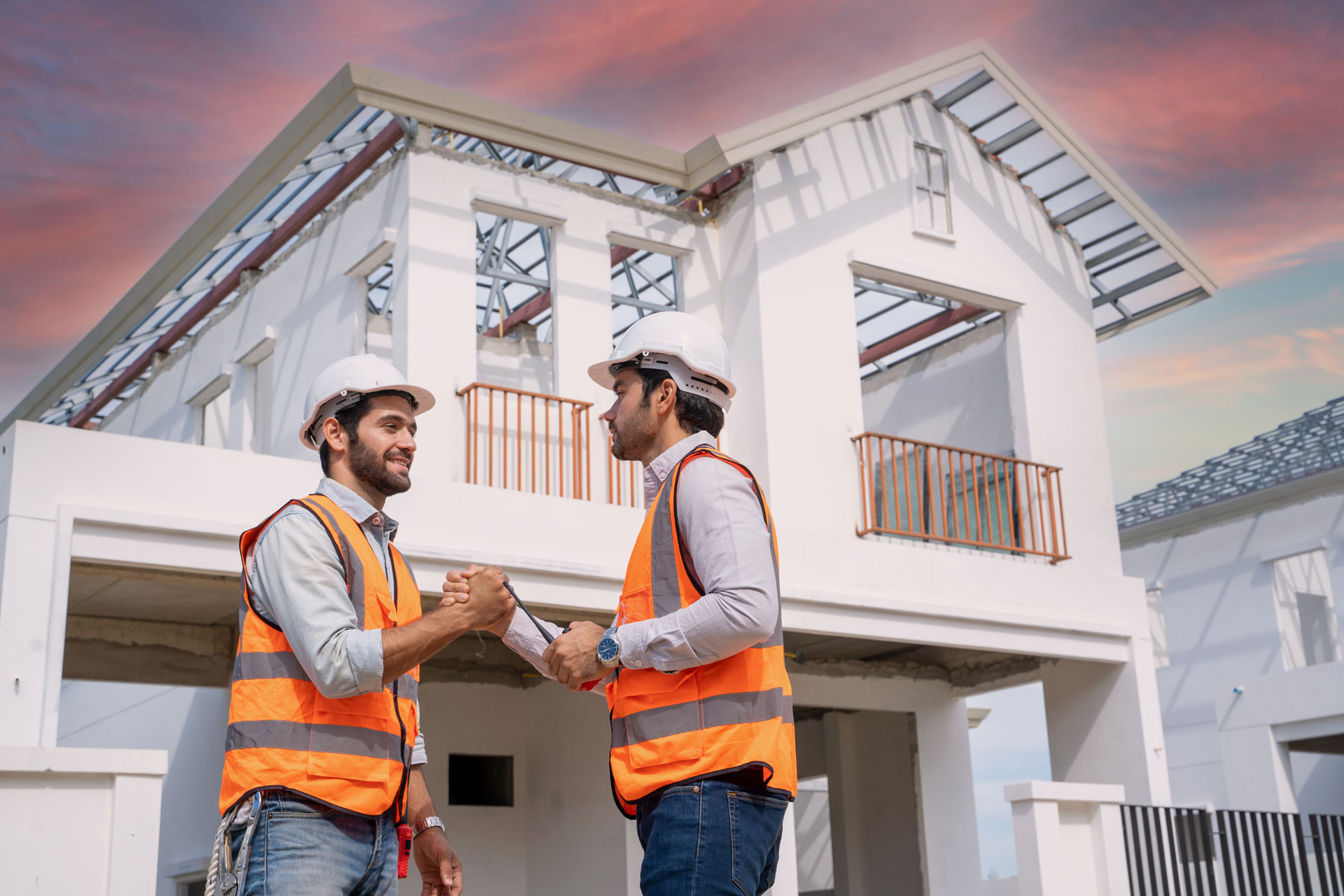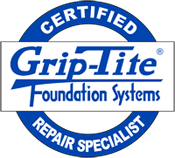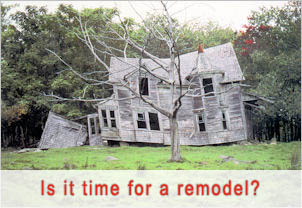
Key Takeaways
- Though it’s possible to add a bathroom to your garage conversion when you strategically consider space and local zoning laws, as well as adhere to building codes for plumbing, electrical, and structural work.
- You need to work with local planning authorities and licensed professionals early on to obtain any permits you may need and make sure all work is up to code.
- Careful design and structural considerations are additionally critical to optimize accessibility, comfort, and safety in your new bathroom, keeping it code-compliant.
- Choosing the right plumbing — gravity-fed drains, flush toilets, sewage ejector pumps — can make for dependable waste management and years of worry-free function.
- A realistic budget, encompassing all the professional fees, material costs, labor rates, and a healthy contingency fund, will allow you to hedge your financial risks and stay on course.
- Outside of convenience, a garage bathroom can boost your home’s value, facilitate multigenerational living, and provide potential rental income or a better guest experience.
Yes, you can add a bathroom to a garage conversion. According to building codes, in most places, you can create a bathroom if you comply with plumbing, ventilation, and drainage regulations. Adding a bathroom provides your new space with more function, whether you’re looking for a home office, guest unit, or rental. You’ll have to check local regulations and obtain permits before you begin. It’s good to understand the main processes, such as installing new water and waste lines, selecting fixtures, and ensuring adequate ventilation. The bulk of this post is the steps, tips, and real-world issues you can encounter when you want to convert your garage into a garage with a bathroom.
Is A Garage Bathroom Feasible?
Of course, you can add a bathroom to a garage conversion, but it’s not simply a matter of selecting fixtures and breaking ground. A lot of factors—like space, local planning authority regulations, and necessary building permits—play into what you can or cannot do when planning your renovation project. Below is a quick overview of the main variables you need to weigh.
Factor | Considerations |
Space Measurements | Garage size, minimum bathroom dimensions, and window requirements for showers |
Zoning Rules | Local zoning allowed modifications, property classification, and authority consultation. |
Building Codes | Plumbing, ventilation, drainage, ceiling height, doorways, and infrastructure compatibility |
Property Value | Buyer appeal, market value, family needs, long-term investment |
Zoning Rules
Zoning regulations are the initial screening. These determine what you may or may not be able to construct in your region. Depending on your location, you may be restricted on whether you can turn a garage into a living space or add plumbing for a new bath. Your project might depend on your zoning designation–some zones prohibit full conversions, some permit them.
Every city/municipality has different zoning. Some demand that you adhere to rigid off-street parking minimums, while others ask for additional permits for plumbing. If your garage is located on a lot in a high-density urban area, then you might have more leeway. If it’s in a low-density or protected neighborhood, you might encounter additional challenges. As always, check with your local planning office and read their guidelines. This initial phase keeps you out of expensive blunders and late-night project struggles.
Building Codes
Local building codes handle the nuts and bolts of home improvement projects. They establish the floor for safety and habitability, including regulations regarding plumbing pipe sizing, venting, and access routes. For a successful garage remodel, building codes in most areas require a minimum ceiling height—typically about 2.4 meters—plus accessible doorway widths. If your garage ceiling is lower or the doorway isn’t wide enough, you’ll have to address these issues before you construct.
Bathrooms with showers have window size requirements based on ventilation and emergency escape. Some codes require mechanical exhaust fans, too. Plumbing is a significant concern—gravity-based drain lines might not be feasible for a garage at street level, so a sewage ejector pump may be necessary. Electrical work requires permits and must adhere to safety protocols, particularly in wet environments. Employing a licensed contractor is the surest way to ensure compliance with local laws and to avoid dangerous shortcuts.
Before starting your renovation project, review your local building code handbook or consult a building inspector. A qualified plumber or contractor can help you decipher the codes and design plans that comply with the law and meet your needs.
Property Value
Not only is a garage bathroom convenient, but it can also increase your home’s value. For a lot of buyers, extra bathrooms are a necessity – particularly in areas with more large families or room for collaborative living arrangements. Installing a garage bathroom can make your home shine, particularly in city markets where every inch of space matters.
A tastefully done garage bathroom does more than just add another fixture—it can transform how potential buyers view your home’s liveability. If you’re converting a garage into a studio or guest suite, a bathroom makes that space way more functional — reducing a ton of comings and goings in your main house. Very handy for rental units, home offices, or hobby workshops. Over time, the investment usually secures a greater resale value.
Practical Foot Traffic
A garage bathroom prevents work, hobbies, or guests from traipsing through your living space.
It helps keep your main house cleaner.
It’s useful for active households.
It can help with privacy.
How To Add A Bathroom In Garage Conversion
Adding a bathroom as part of your garage remodel is a multi-step process that requires proper planning and a good understanding of local laws regarding building permits. Garage conversions with bathrooms can take months, and you must meet codes to legally live there, which typically require a toilet, sink, and shower, along with adequate insulation and safe plumbing system connections.
1. Secure Permits
Step one is to always find out what necessary building permits you need for your area, especially when considering a garage remodel. Each city or country is going to have its own rules regarding what is permissible in a garage conversion. Permits for plumbing and electrical work are almost always required, particularly for garage bathroom additions. Submit your applications as early as possible, because waiting for approvals will delay your timeline. Save all your paperwork and emails—building inspectors will review these during and after your renovation project.
2. Plan Plumbing
Plumbing is typically the most difficult aspect of converting a garage into a bedroom and bathroom. Begin by selecting ideal locations for water lines and drains, as this will dictate your entire layout. Occasionally, you can tie into existing pipes, but more often than not, you’ll require new plumbing tying into the main sewer. That could entail tearing up the concrete floor to install or relocate subterranean piping, an expensive process. Have a professional plumber perform this work, as errors here can lead to leaks, water damage, or code violations. Ensure your plumbing plan aligns with local codes — this is mandatory for legal living spaces.
If your garage is distant from the main drain, a macerating toilet — or a small pump — can push waste uphill or across great distances.
3. Design Layout
A thorough floor plan is important for your bathroom renovation project. Take your garage’s square footage and determine how much space will be allocated for the bathroom. Consider door and window locations for convenient access and natural illumination. Smart design can make even a tiny bathroom feel open. Pick the style that works for your home—plain, contemporary, or classic. Space-saving options include wall-mounted sinks or sliding doors. Include cabinets or shelves for storage to keep the bathroom tidy. Prior to construction, consider installing wall insulation and sealing floor cracks to maintain warmth and dryness.
4. Fortify Structure
Not all garages can support the additional load of a full bathroom addition, so it’s essential to verify the construction initially. Some might require new under-floor supports or reinforced interior walls to accommodate plumbing and heavy fixtures. If your garage ceiling is low, consider lifting it; many jurisdictions establish a minimum height for living spaces in renovation projects. Hiring a qualified plumber or a structural engineer is advisable if you’re planning major changes to ensure the garage remains secure and firm.
5. Install Utilities
You require new wiring for lights, outlets, and a fan in your bathroom renovation project. All outlets in wet areas must be GFCI-rated. Heating is essential as well—consider radiant floors or a wall heater. Always add an exhaust fan to keep mold out and air fresh in your new bathroom.
Essential Plumbing Solutions
Adding a bathroom to a garage remodel is a tricky endeavor — primarily due to the plumbing system. You still need to hook new fixtures—such as a toilet, sink, and shower—up to your home’s primary waste lines. This is the most expensive portion of the job — and can start at $35,000 if your drainage and electrical systems are already sound. For a garage bathroom addition, you’re looking at four to six weeks for an attached garage, and longer—three months—if you hit trenching or other setbacks in detached spaces. Local permits are almost always required, and bypassing them can create huge issues should you ever sell the house. Here’s a look at key plumbing solutions and their features.
Solution | Features | Pros | Cons |
Gravity-Fed Drains | Uses slope for natural flow | Reliable, low maintenance | Needs an existing drain below the fixture |
Upflush Toilets | Pumps waste upward to the main line | Good for raised drainage, flexible setup | Requires a pump, more moving parts |
Sewage Ejector Pumps | Pumps waste from below sewer line | Handles full bathroom waste | Needs frequent checks, upfront cost |
Gravity-Fed Drains
- Uses the natural pull of gravity to move waste.
- Simple and reliable system with few moving parts.
- Wants the drain line to downward curve at just the right angle, typically 2% or better, for unhindered flow.
- Performs optimally if the garage floor is higher than or flush with the main sewer line.
- See if your main waste line can take the additional load before installing fixtures.
- Design the course with minimal turns to reduce clogging potential and simplify servicing.
You have to watch the drain pattern, especially during a garage remodel. The pitch needs to be up to local code, which varies between cities and countries. If your garage lies lower than the main sewer line, gravity-fed drains may not function adequately, and you may have to create trenches to put in a new plumbing system piping. This can add cost and time. Always verify your waste line’s size and health—older lines can’t always support additional flow from a new bathroom addition, so a qualified plumber should check and recommend before you begin!
Upflush Toilets
Upflush toilets are the way to go when your garage’s plumbing won’t handle simple gravity drains. These systems grind and pump waste up to the main sewer line, allowing you to install a bathroom basically wherever you want. It’s the macerator – a pump that shreds waste and pumps it through tiny pipes. In other words, you no longer have to jackhammer concrete or sink the floor, which can save you some major cash and time, particularly in finished garages or tight quarters.
You should be aware that upflush systems require power to operate the pump. If you experience power outages frequently, this might not be the best fit. Maintenance is straightforward, though it needs to be routine—clean the macerator to prevent blockages and inspect the pump for wear. Most toilets are easy to install and can meet codes if installed by a licensed professional. They’re ideal for half-baths or locations where it’s impossible to run a standard line.
Sewage Ejector Pumps
A sewage ejector pump can efficiently push waste uphill to your home’s main line, even if your garage space is below street level. It stores waste in a sealed pit and pumps it up when it reaches a certain height, making it powerful enough for a complete bathroom addition, handling waste from the toilet, sink, and shower simultaneously. Installation requires both a power source and adequate space for the pit—a significant consideration if your garage remodel is already cramped.
The pump’s size must correspond with your needs; too small could lead to premature burnout, while too big results in unnecessary expenses. These pumps must meet local laws and should be inspected by a qualified plumber. Regular annual inspections are essential to maintain them in good operating order and prevent backups.
Compliance And Costs
Plumbing work always requires a building permit. Rates can climb with difficult plans or upscale hardware. Look to spend $30,000–$60,000 on the bulk of your renovation project. Stick to code so you don’t get sued.
Budgeting The Conversion
Budgeting a bathroom addition to your garage conversion involves planning each expense, from the design aesthetic to the very last labor detail. For instance, the average garage remodel costs between $6,022 and $27,705, and a bathroom alone can average $200–$300 per square foot. Your overall spend will vary by project size, scope, and local rates, but you can budget well by breaking it down into its key components. The checklist below addresses everything budget-related you should consider before you begin.
Professional Fees
See what contractors and plumbers, and electricians tend to charge in your area. Certain regions will have higher rates due to demand or local cost of living, so don’t depend on national averages.
Consult with 3+ licensed professionals for each job. Don’t just compare them on price; compare their experience and their customer reviews. It might not be the best value to go for the cheapest. Select experts who have done the same type of work and can demonstrate excellence. Don’t forget to include all professional fees, permits, and inspections in your budget from the outset. Garage conversions typically need permits, which contribute to costs but help ensure the work is up to code.
Material Expenses
Inventory everything you’d have to have—tiles, toilet, sink, shower, pipes, waterproof wall panels, lights. A garage bathroom contends with more moisture and temperature fluctuations than any other room, so select rugged, water-resistant materials.
Shop around for brands and prices. Or, maybe you can get comparable quality fixtures for less from another source. See if vendors provide bulk discounts or free shipping for high-volume purchases. Be sure to budget delivery, import fees, or special handling in your material budget. Even seemingly minor extras such as grout, sealant, and fasteners will accumulate if you forget them in the planning phase.
Labor Rates
Labor can comprise a significant portion of your overall cost, so get quotes from local rates for every trade. Certain projects, such as new water lines or relocating underground piping, are more expensive because they require specialized labor.
The more ambitious your project—moving walls or relocating access to the main sewer—the greater the labor expense. When you budget, reserve enough for both scheduled and unscheduled work, as labor can migrate if the schedule changes. Hiring a general contractor not only helps corral trades and keep the project humming, but it can also add a management fee.
Contingency Fund
Reserve 10–20% of your total budget for the unexpected. Issues such as concealed plumbing damage, required structural repairs, or a last-minute interior design switch can arise and will carry additional cost.
Budget your conversion and top-up if you view costs as increasing. Spend your contingency on actual needs, so you don’t overspend.
Beyond The Basics: A Lifestyle Upgrade
Incorporating a garage bathroom addition in your garage conversion is far beyond a technical upgrade. It can transform your use of your home, who can live in it, and your property’s value. Globally, more homeowners convert garages into habitable spaces to satisfy rising demand for extra living space, particularly in regions where land is limited and basements are uncommon. Once you throw a bathroom into the mix, you’ve created an opportunity for truly modern, adaptable living.
- Gives you a guest suite or extra living area
- Makes it easier to host friends and family
- Adds privacy for teens or older family members
- Creates a comfortable spot for remote work or hobbies
- Boosts rental potential as an accessory dwelling unit (ADU)
- Increases property value and market appeal
- Supports care for aging parents or multigenerational families
- Let’s help you adapt your home as your needs change
Future-Proofing
As you design your garage bathroom addition, consider how your needs might expand or evolve. If you incorporate a bathroom now, later on you may want to add a shower, tub, or even make the space handicap accessible. Opt for fixtures and layouts that facilitate these upgrades easily. Choose lever-style handles, large doorways, and slip-resistant floors, which assist both toddlers and seniors. A timeless design—neutral tiles, clean lines, and great lighting—will remain appealing for years to come and attract prospective buyers or renters.
A garage remodel wreaks less havoc on your life than a traditional addition. It’s generally faster and utilizes space you already have, but you will encounter limitations. Headroom and insulation may be concerns, so design for effective climate control and ventilation from the beginning. If you want to expand later—like adding a laundry area or more storage—leave plumbing and electric lines accessible to spare yourself headaches in the future.
Multigenerational Living
A garage bathroom option supports an independent living area (a big plus for multigenerational clan members). With a bathroom, grandparents, grown children, or visitors can enjoy privacy and independence. This setup helps balance family needs, whether you require a long-term stay for older relatives or a quiet space for teenagers.
Consider who will inhabit the space. Wide doorways, grab bars, and low-threshold showers appeal to both children and seniors. Plus good light and convenient-to-access storage. Privacy matters, too — so think soundproofing and a smart layout. With a properly designed garage bathroom, you can make your home more inviting to family from near and far!
Rental Potential
Garage conversions with bathrooms are all the rage with renters in space-constrained cities. If you’re thinking about renting out your garage ADU, consult the local regs. Some locations mandate specific minimum ceiling heights, windows, and safety features for rentals to be legal. Design the bath to accommodate one or two—lean and mean with good fittings.
Brag up the bathroom in your rental listings. They want their privacy and comfort. Sleek, contemporary designs make your room shine. A private bathroom is a big bonus for renters, especially those working from home or requiring a guest suite.
Entertainment and Functionality
An extra bathroom addition means less waiting when you’ve got guests, making entertaining simpler with a dedicated powder room. This renovation enhances coziness for sleepovers or large family dinners and increases your home’s versatility for any event.

Common Project Pitfalls
Garage-bathroom conversions pose special challenges, especially regarding the necessary building permits and local laws. A lot of problems arise from bad planning or insufficient technical knowledge, making it crucial to ensure proper garage plumbing and project diligence.
Moisture Issues
Moisture is the top concern in garage bathroom projects. Garages almost never have the waterproofing required for wet spaces. Showers, sinks, and pipes can leak into floors and walls, causing mold or damage. Expect moisture and add waterproof paint, a vapor barrier, and seal edges near plumbing fixtures.
Install water-resistant building materials, such as cement board, and not drywall, around showers. Both tiny pipe and fixture leaks can create major issues down the road. Test all plumbing connections both during and after installation. Exhaust fans are a necessity. They regulate moisture and resist mold. Take, for instance, a humidistat fan, which can be programmed to kick on when moisture levels increase — helping to maintain a dry, healthy airspace.
Poor Ventilation
Insufficient ventilation can give your bathroom a stale, musty odor. Trusting only in old garage windows or failing to install adequate fans is dangerous. Plan to install an exhaust fan rated for the space and see if you can add an operable window for fresh air. Effective ventilation circulates air, minimizes moisture build-up, and promotes rapid drying of materials.
Inspect the fan often to ensure it’s operating properly. Wash or change the filter – at least annually. Bad venting blows HVAC performance as well. If you miss this, your ADU could be uncomfortably hot in summer or cold in winter — rendering the space unusable in extreme weather.
Code Violations
Building codes are there for our safety and comfort. They assume that a garage bathroom is legal without really checking local rules or zoning. This may result in fines or stop-work orders. As always, check your city’s codes before diving in. Consult a contractor or city inspector if you’re uncertain, particularly about plumbing and electrical work.
Every component–drainage, wiring, insulation–has to be up to code. For instance, outlets adjacent to water should have GFCIs. Schedule inspections at key points: after framing, after plumbing, and before drywall goes up. If you get a code violation, repair it immediately to avoid larger delays.
Planning And Communication
Failing to plan your layout or budget in detail will derail your project. Rushed floor plans result in a tiny bathroom or a lack of storage. Check in with your contractor frequently to monitor progress.
Always do a walk-through after each stage. Search for leaks, subpar insulation, or botched work.
Inadequate insulation or HVAC can make your space uncomfortable at any time of the year.
Conclusion
A bathroom in your conversion garage adds true value to your space. You score convenience, luxury, and a serious increase in functionality for your home. These easy-to-follow steps will help you know what you need—great plumbing, intelligent planning, and realistic cost estimates. You encounter genuine labor, but the reward shines. FRESH bathroom = less waiting in mornings, more space for guests, easier flow throughout the day. Beware of piecemeal, hurried, overlooked detail because in the end, these are far more costly. For optimal success, check local regulations, choose experienced assistance, and budget accordingly. If you want to get started, examine your needs and take your first step. Your next project begins with a plan.
Frequently Asked Questions
1. Can You Add A Bathroom To A Garage Conversion?
Can you add a bathroom to a garage conversion? This renovation project requires planning permission, plumbing, and necessary building permits, ultimately enhancing your home’s value and livability.
2. What Plumbing Is Needed For A Garage Bathroom?
You’re going to need water supply lines, drainage pipes, and ventilation for your renovation project. Hiring a qualified plumber will guarantee that your plumbing system is up to safety codes and operates efficiently.
3. Do I Need A Permit To Add A Bathroom In My Garage?
Yes, bathroom additions usually need the necessary building permits. Permits ensure your renovation project meets safety and building codes. Always check with your local planning authority before you begin.
4. How Much Does It Cost To Add A Bathroom To A Garage Conversion?
Costs vary by size, materials, and location for your renovation project. Average cost: $5,000 to $15,000. Pre-planning your budget avoids surprises.
5. Will Adding A Bathroom Increase My Home’s Value?
Yes, a bathroom addition usually adds value, enhancing the appeal and usefulness of homes to potential buyers.
6. What Are Common Challenges With Garage Bathroom Conversions?
Typical issues involve plumbing, drainage, and necessary building permits. Advanced planning and professional assistance can solve these renovation project headaches.
7. Can I Install A Bathroom In Any Garage?
While most garages can be converted into extra living space, others might require structural changes or upgrades. Ensure your garage measures, ceiling height, and foundation are strong enough before you begin.
Your Dream Home Addition Built By Mares & Dow Construction & Skylights – Let’s Create The Extra Space You’ve Been Dreaming Of
Expand your home’s potential and enhance everyday living with a custom home addition from Mares & Dow Construction & Skylights. With over 40 years of construction experience, we specialize in high-quality additions that seamlessly integrate with your existing structure and lifestyle needs.
Whether you’re planning a new primary suite, second-story expansion, or an in-law unit, we tailor each addition to match your vision, your home’s architecture, and your long-term goals.
Key benefits of our general home addition services include:
• Adding valuable square footage for growing families or multi-use living
• Increasing your property’s value with expert design and construction
• Creating energy-efficient, modern living spaces tailored to your needs
Proudly serving Contra Costa County—including Alamo, Danville, Orinda, Martinez, and San Ramon—Mares & Dow Construction & Skylights is your trusted partner for functional, beautiful, and lasting home additions.
Contact Mares & Dow Construction & Skylights today for a free, no-obligation quote, and let’s build your ideal home addition together.
Disclaimer
The materials available on this website are for informational and educational purposes only and are not intended to provide construction, legal, or professional advice. You should consult with a qualified general contractor or industry professional for advice concerning any specific construction project, remodeling plan, or structural concern. Do not act or refrain from acting based on any content included on this site without seeking appropriate professional guidance. The information presented on this website may not reflect the most current building codes, regulations, or industry best practices. No action should be taken in reliance on the information on this website. We disclaim all liability for actions taken or not taken based on any or all of the contents of this site to the fullest extent permitted by law.








 based on
based on 

